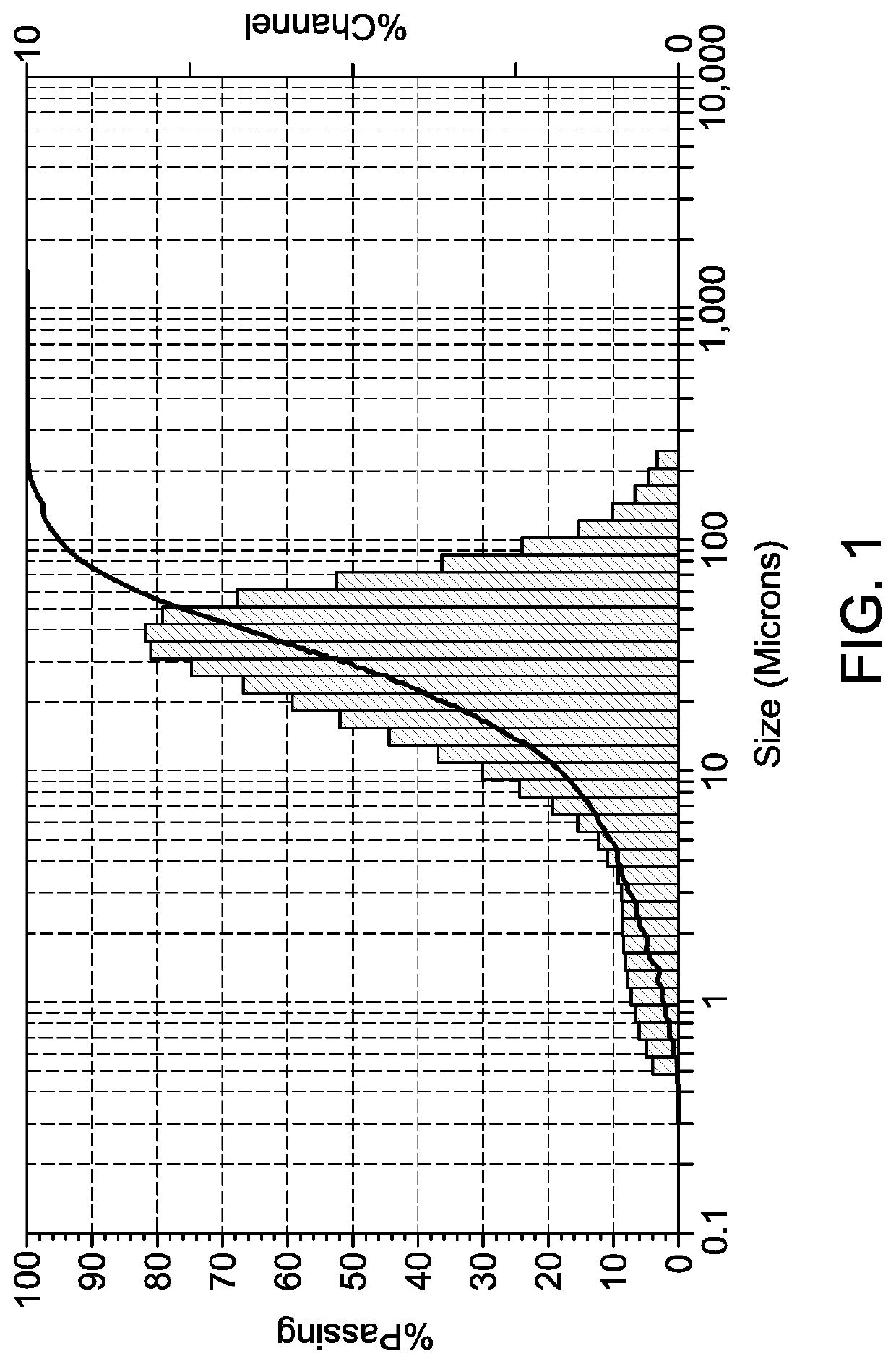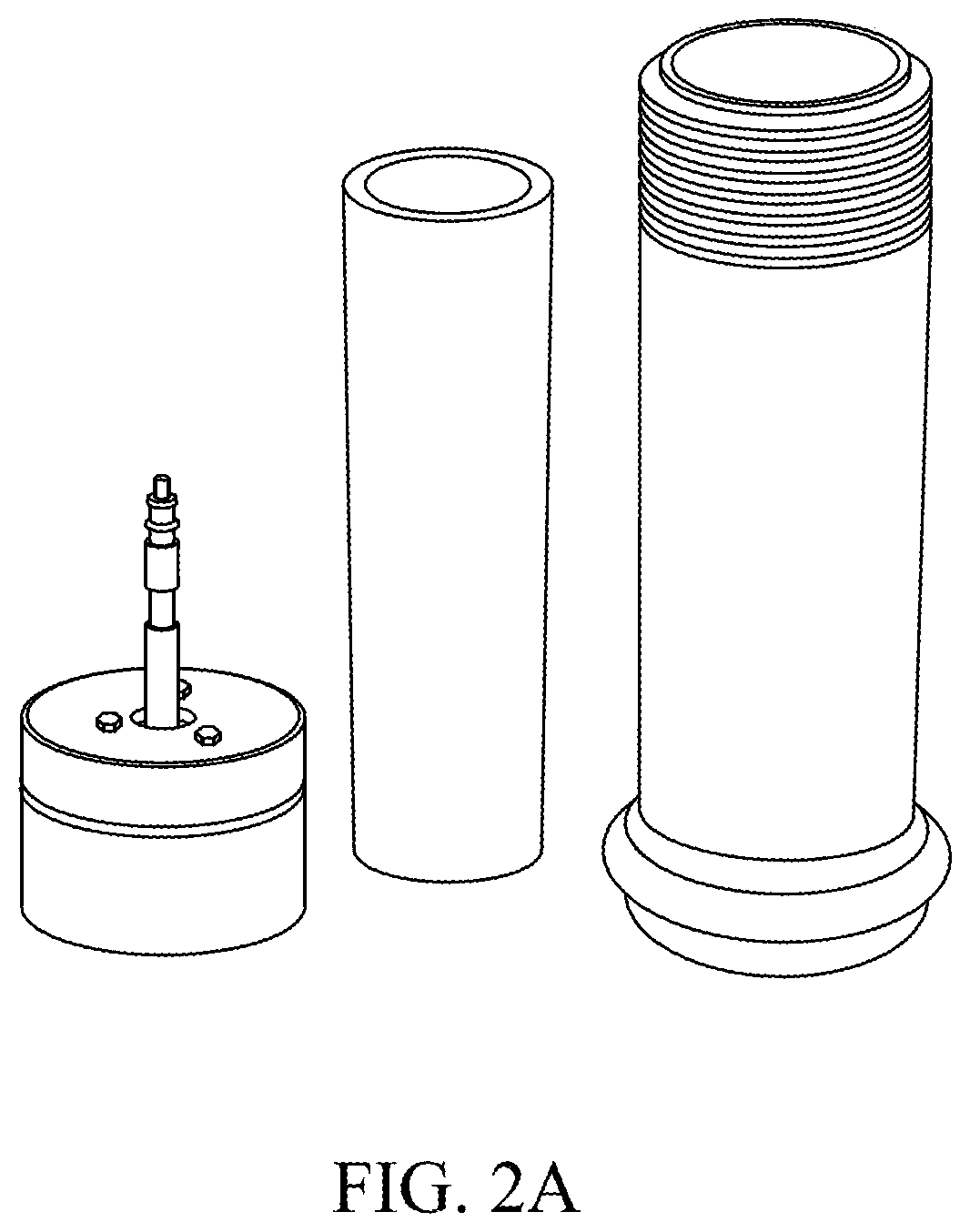Water-based drilling, completion, and workover fluid composition with reduced barite sagging
a technology of workover fluid and water-based drilling, applied in the direction of drilling composition, chemistry apparatus and processes, etc., can solve the problems of reducing well productivity, permeability reduction near the wellbore, formation damage, etc., and achieve the effect of preventing sagging
- Summary
- Abstract
- Description
- Claims
- Application Information
AI Technical Summary
Benefits of technology
Problems solved by technology
Method used
Image
Examples
example 1
Materials
[0102]A sample of commercial barite (obtained from a local supplier) with an average particle size of 30 microns was used in this study as a weighting material for water-based drilling fluid. The barite sample mainly contains 82 wt. % barium, 12.6 wt. % sulfur, and some other impurities. Table 1 lists the elemental composition of the barite sample that was obtained using X-ray fluorescence technique (XRF). The particle size distribution of barite sample is shown in FIG. 1. Some additives (obtained from local supplier) were used to formulate the drilling fluid. Soda ash was used to maintain the level of calcium in the water. Bentonite and Xanthan polymer were used as viscosifiers to enhance the rheological properties of the drilling fluid. Starch and PAC-R were used to control fluid loss. Clay stabilization was maintained by adding potassium chloride to the drilling fluid. Calcium carbonate was used as a bridging agent. See Caenn, R., et al., incorporated herein by reference...
example 2
Experimental—Fluid Preparation and Rheology Measurements
[0103]A barite-weighted drilling fluid, 15 ppg, was prepared using drilling fluid additives. Water was added with a ratio of 0.7 bbl (245 g in laboratory units) and poured in the drilling fluid mixer container. Defoamer and soda ash were added to prevent the formation of foam and to maintain the level of calcium in water, respectively. See Caenn, R., et al., incorporated herein by reference in its entirety. Then, other additives were added and mixed for a specific time, starting with viscosity control agents bentonite and xanthan polymer. The mixing started with low rotational speed then the speed was increased gradually as the viscosity built up. Table 2 lists all drilling fluid additives, their amounts and functions, and the mixing time. Following the same procedure, several samples of drilling fluid were prepared by adding different ratios of the new additive to the drilling fluid formulation (0.5, 1, 1.5, 2, and 3 vol. % of...
example 3
Experimental—Sag Tests
[0104]A sag test was conducted to study the effect of adding the new additive on barite sag tendency. First, a drilling fluid sample was agitated using drilling fluid mixer. An aging cell was used to contain and keep the fluid pressurized. A pressure of 500 psi was applied using nitrogen to prevent fluid from evaporation and the aging cell was kept in the oven for 24 hours at specific temperature and static conditions. The sag test was conducted at both vertical and inclined conditions (45 degrees). After 24 hours, the cell was taken out and left to cool down and the pressure was released. Afterwards, two fluid samples were taken from the top and the bottom of the cell. The densities of the two samples were measured and the sag factor was calculated using Equation 1,
SagFactor=ρBottomρBottom+ρTop(1)
where ρBottom=Bottom density in ppg, and ρTop=top density in ppg. A fluid having a sag factor between 0.5 and 0.53 will have a good sag performance, while a sag facto...
PUM
| Property | Measurement | Unit |
|---|---|---|
| mean diameter | aaaaa | aaaaa |
| density | aaaaa | aaaaa |
| pressure | aaaaa | aaaaa |
Abstract
Description
Claims
Application Information
 Login to View More
Login to View More - R&D
- Intellectual Property
- Life Sciences
- Materials
- Tech Scout
- Unparalleled Data Quality
- Higher Quality Content
- 60% Fewer Hallucinations
Browse by: Latest US Patents, China's latest patents, Technical Efficacy Thesaurus, Application Domain, Technology Topic, Popular Technical Reports.
© 2025 PatSnap. All rights reserved.Legal|Privacy policy|Modern Slavery Act Transparency Statement|Sitemap|About US| Contact US: help@patsnap.com



